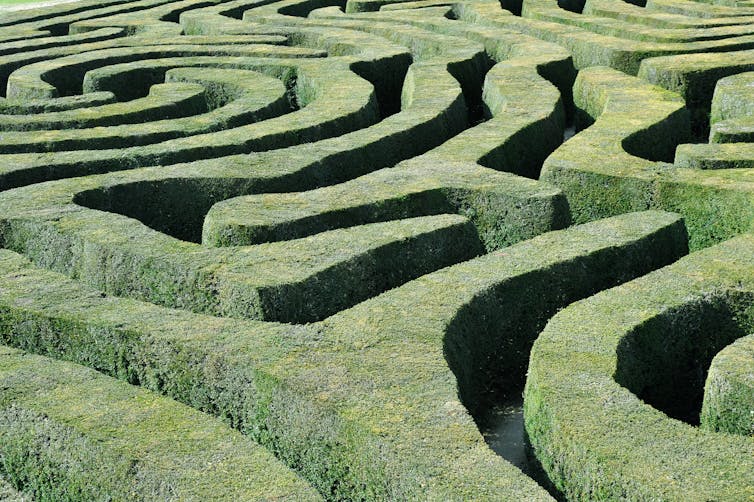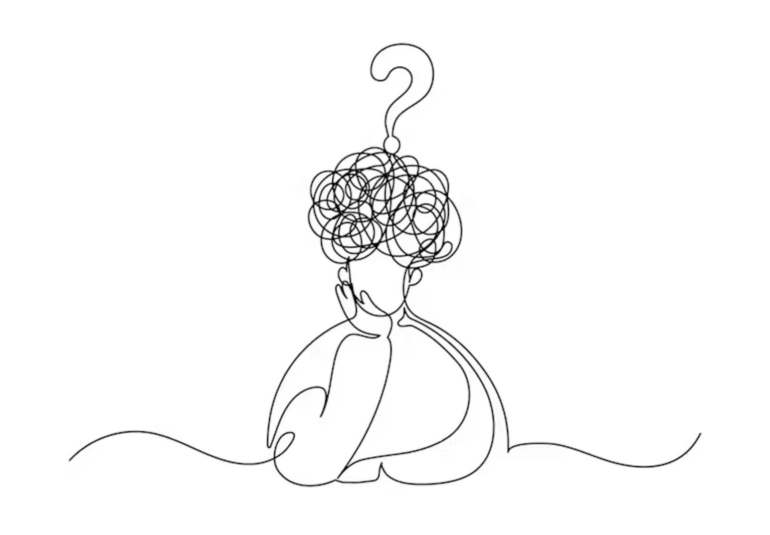Conspiracy theories are everywhere, and they can involve just about anything.
People believe false conspiracy theories for a wide range of reasons – including the fact that there are real conspiracies, like efforts by the Sackler family to profit by concealing the addictiveness of oxycontin at the cost of countless American lives.
The extreme consequences of unfounded conspiratorial beliefs could be seen on the staircases of the U.S. Capitol on Jan. 6, 2021, and in the self-immolation of a protestor outside the courthouse holding the latest Trump trial.
But if hidden forces really are at work in the world, how is someone to know what’s really going on?
That’s where my research comes in; I’m a social psychologist who studies misleading narratives. Here are some ways to vet a claim you’ve seen or heard.

Sometimes there’s nothing but the maze itself.
oversnap/E+ via Getty Images
Step 1: Seek out the evidence
Real conspiracies have been confirmed because there was evidence. For instance, in the allegations dating back to the 1990s that tobacco companies knew cigarettes were dangerous and kept that information secret to make money, scientific studies showed problematic links between tobacco and cancer. Court cases unearthed corporate documents with internal memos showing what executives knew and when. Investigative journalists revealed efforts to hide that information. Doctors explained the effects on their patients. Internal whistleblowers sounded the alarm.
But unfounded conspiracy theories reveal their lack of evidence and substitute instead several elements that should be red flags for skeptics:
Dismissing traditional sources of evidence, claiming they are in on the plot.
Claiming that missing information is because someone is hiding it, even though it’s common that not all facts are known completely for some time after an event.
Attacking apparent inconsistencies as evidence of lies.
Overinterpreting ambiguity as evidence: A flying object may be unidentified – but that’s different from identifying it as an alien spaceship.
Using anecdotes – especially vaguely attributed ones – in place of evidence, such as “people are saying” such-and-such or “my cousin’s friend experienced” something.
Attributing knowledge to secret messages that only a select few can grasp – rather than evidence that’s plain and clear to all.
Step 2: Test the allegation
Often, a conspiracy theorist presents only evidence that confirms their idea. Rarely do they put their idea to the tests of logic, reasoning and critical thinking.
While they may say they do research, they typically do not apply the scientific method. Specifically, they don’t actually try to prove themselves wrong.
So a skeptic can follow the method scientists use when they do research: Think about what evidence would contradict the explanation – and then go looking for that evidence.
Sometimes that effort…



